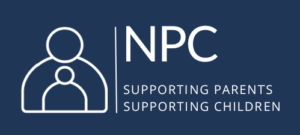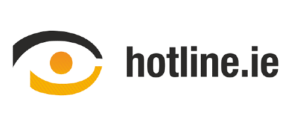#SilentWitness
Report Online Bullying and Abuse
About #SilentWitness
The Webwise #SilentWitness campaign explores the topic of online bullying and abuse, and aims to spark conversations about how we can create more tolerant and inclusive online communities.

#SilentWitness Short Films
Resources
The HTML Heroes Programme has been designed for teachers of 1st and 2nd class to introduce pupils to the first steps of accessing and using the internet in a safe and responsible manner.
Explore the topic of respectful online communication with the HTML Heroes – An Introduction to the Internet Programme for 3rd and 4th classes.
This Primary Anti-Cyber Bullying Teachers’ Handbook is an SPHE resource developed to engage 5th and 6th class primary school students on the topic of cyber bullying.
Explore the topics of ethics and empathy, and more, with All Aboard for DigiTown which is a learning path for 9 -12 year olds to become smart digital citizens.
Connected is Junior Cycle Digital Media Literacy Resource which explores Online Wellbeing; News, Information and Problems of False Information; Big Data and the Data Economy; and My Rights Online.
Lockers is an SPHE resource developed to engage 2nd and 3rd year students on the topic of non-consensual image sharing.
Be in Ctrl is a Junior Cycle SPHE educational resource addressing the issue of Online Sexual Coercion and Extortion.
UP2US provides teachers with lesson plans to address the issue of bullying and also supports the development of anti-bullying policies in schools.
What can I do?
What to do if you encounter abuse and bullying online, and where to get help.
How to dealing with bullying and abuse online
Don’t Reply to messages that harass or annoy you.
Even though you may really want to, this is exactly what the sender wants. Put down your phone or take a step back. Responding immediately can sometimes makes the situation even worse, particularly in serious cases of harassment.
Keep the Message: You don’t have to read it, but keep it.
If you keep getting messages that upset you, you will need to have evidence in order to get help. Website owners, mobile phone companies and the Gardaí will all look for evidence before they will be able to take any action to help you.
Block the Sender: You don’t need to put up with someone harassing you.
If you are getting messages that upset you, block the person. All popular social networks and messaging apps allow users to block other users. On most social networks this is a straightforward process done through the app setting or by clicking on the user profile. On some mobile phones you can block a caller’s number. You might need to check the manual or ask an adult to help you do this.
Talk to someone you trust, and get support:
Speaking to your parents/guardian, friends, or someone you trust is usually the first step in dealing with any issue. In the case of school related bullying messages you should also talk to a teacher you trust. If you need to speak to someone straight away please call Childline on 1800 66 66 66. In serious cases of bullying and harassment you should contact the Gardai.
Report the Problem:
Report the problem to the people who can do something about it. You can take control, by not putting up with offensive content by reporting it when you come across it. Responsible websites, social networks and mobile phone operators provide ways for their users to report things such as inappropriate content, cyberbullying or hate speech and or other offensive material.
How to report bullying and abuse online
Remember to be a good friend and digital citizen, if you see someone being harassed online or are aware of bullying, there are steps you can take to help that person.
If you are worried a friend or someone you know is being bullied online:
Let your friend know you are there for them.
Don’t join in or share any comments, posts or pictures that may hurt others.
Report the bullying to someone who can help – a parent or teacher.
If you see offensive comments online report them to the platform.
No one should ever experience harassment online, we can all help make the internet a better place by standing up to online harassment and bullying.
Tips for being an upstander
Where to get help
Irish Safer Internet Centre
Hotline.ie – Report illegal content
ISPCC – 24 hour support line for children and young people
Webwise – Free online safety resources and training for educators
National Parents Council Primary – Helpline for parents
Find more
Help and advice – Teachers

Share your plans to celebrate Safer Internet Day 2023 on our interactive Ireland events map, and order your #SID2023 pack and free wristbands for all participants.

Use the HTML Heroes, MySelfie, Up2Us or Connected Programmes to address the topic of cyberbullying, and respectful online communication. Free hard copies of these can be ordered or downloaded for free.

Invite the Gardaí to your school to deliver the Be Kind Online Primary Programme or Connect with Respect Post-Primary talk.

Classroom videos can be a great way to spark a discussion with pupils. The Webwise videos feature animations and short films for Primary and Post-Primary.

The Cyberbullying Guidance for Teachers Information Hub has been created by Webwise to provide guidance to teachers and school leaders on the issue of cyberbullying, creating an anti-cyberbullying culture and promoting student’s wellbeing including online wellbeing.

The Cyberbullying Guidance for Teachers Information Hub has been created by Webwise to provide guidance to teachers and school leaders on the issue of cyberbullying, creating an anti-cyberbullying culture and promoting student’s wellbeing including online wellbeing.
Help and advice – Parents and Carers

Online bullying is something you should talk about with your child before it happens. This article offers helpful advice on how to deal with cyberbullying.

Dr. Elaine Byrnes, Doctoral Researcher-Psychology, offers advice to parents on talking to your teen about respectful communication online.

Help your child take control by not putting up with offensive content and by reporting it when you come across it. Download this checklist which outlines ways to respond to bullying online.

A Parents’ Guide to a Better Internet is a free online safety booklet for parents. It provides information and advice on how to deal with bullying online, along with advice on a range of other key online safety topics, to help you support your child or teenager online. It can be ordered or downloaded for free.

Having regular discussions about life online is a key way to help children and young people have a safe and positive experience. Get started using the fun and interactive #TalkListenLearn Topic Generator for conversation starters on a range of topics such as bullying online, privacy, and false information.

The Webwise Parents Hub has free advice videos from experts, advice on key online safety topics, Explainer Guides to popular apps and platforms, Talking Points, How-To Guides, and free resources.
Help and advice – Young People

Cyberbullying or online harassment can potentially affect anyone. The experience can have a huge impact both emotionally and physically on the victim, but there are ways to deal with it, and supports are available to people.

For most of us online connections have transformed our daily lives, opening up a world of amazing opportunities. However, no matter who we are or where we are, we are all digital citizens, and how we act can have a big influence on everyone else.

Just like in other areas of life, being online can bring positive and negative experiences and it is a good idea to take time to consider how going online can influence the way we feel, think, and behave

Online harassment or cyberbullying can happen to anyone, but with just a few simple steps, we can all play role in protecting each other.
Cyberbullying Hub
The Cyberbullying Guidance for Teachers Information Hub has been created by Webwise to provide guidance to teachers and school leaders on the issue of cyberbullying,creating an anti-cyberbullying culture and promoting student’s wellbeing including online wellbeing.


